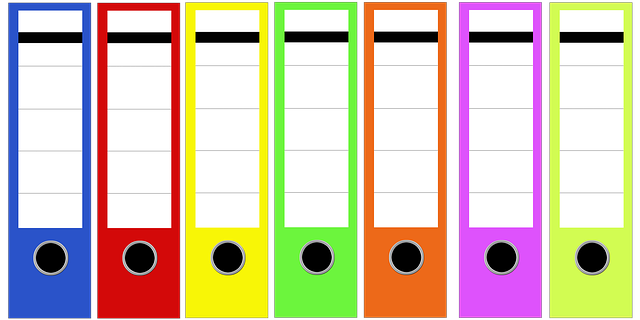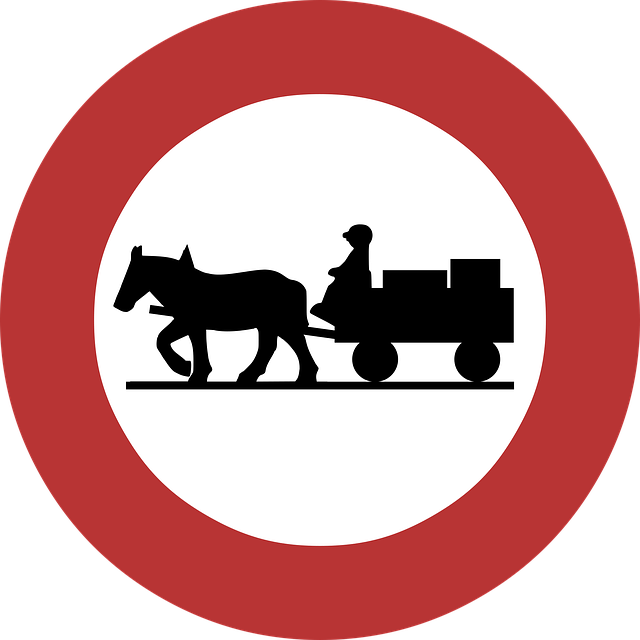Expanding multinationals face complex translation challenges in UK regulatory submissions, with errors causing delays, fines, and reputational damage. Professional Translation services for Regulatory Submission Documents UK are vital to ensure accuracy, compliance, and preservation of technical integrity across languages. These services employ experts, use best practices like translation memory, and implement rigorous quality assurance protocols to facilitate market entry, minimize risks, and support global expansion in highly regulated sectors.
In the globalized regulatory landscape, ensuring precise and compliant documentation is paramount, especially for UK-based organizations navigating international markets. However, the challenges mount when submitting these critical documents in multiple languages. Inaccurate translations can lead to costly delays, legal issues, and reputational damage. This article delves into the intricacies of preparing regulatory submissions for translation, offering expert insights on how to overcome common pitfalls. We explore the vital role of professional translation services tailored for UK regulatory submission documents, ensuring accuracy, consistency, and compliance across languages.
- Understanding Regulatory Submission Requirements in the UK
- The Role of Accurate Translation Services in Compliance
- Best Practices for Translating Technical Documentation
- Ensuring Quality Assurance in Regulatory Submission Translations UK
Understanding Regulatory Submission Requirements in the UK

Regulatory submissions are a critical aspect of operating within the UK’s legal framework, requiring meticulous attention to detail and precise adherence to specified guidelines. For multinational corporations or businesses looking to expand into the UK market, understanding these requirements is paramount. One potential pitfall that often arises is the translation of regulatory documents, which can be complex and time-sensitive. Translation services for Regulatory Submission Documents UK play a vital role in ensuring accuracy and compliance across languages.
The UK’s regulatory landscape encompasses various sectors, each with its own set of submission protocols. For instance, pharmaceutical companies must navigate stringent guidelines from the Medicines and Healthcare products Regulatory Agency (MHRA), while financial institutions deal with the Financial Conduct Authority (FCA)’s stringent requirements. These bodies demand not just linguistic precision but also a deep understanding of industry-specific terminology and legal nuances. Translation errors can lead to delays, fines, or even market access restrictions.
Therefore, when preparing regulatory submissions, businesses should turn to expert translation services tailored for this purpose. Such services employ professionals who are not just fluent in relevant languages but also possess specialized knowledge in the subject matter at hand. They understand the importance of maintaining consistency and accuracy in terminology across different regulatory filings. By leveraging these services, companies can streamline their submission processes, ensuring that their documents meet the stringent UK regulatory standards while adhering to strict deadlines. This strategic approach not only facilitates market entry but also fosters a robust and compliant operational foundation within the UK.
The Role of Accurate Translation Services in Compliance

Regulatory compliance is a complex and critical aspect of any global operation, especially when dealing with submission documents. As businesses expand internationally, ensuring accurate translation services for regulatory submission documents UK becomes an indispensable component of their success. Translation errors can lead to costly delays, legal issues, and damage to reputation—a concern that cuts across industries and sectors.
The implications of inaccurate translations in regulatory submissions are far-reaching. Misinterpreted instructions or misrepresented data can cause significant delays in market access, affecting a company’s competitive edge. In highly regulated fields like pharmaceuticals or financial services, even minor errors can lead to unacceptable risks and legal non-compliance. For instance, a study by the European Commission revealed that around 30% of rejected applications for market authorization were due to documentation issues, many of which could have been prevented with proper translation quality.
Translation services play a pivotal role in bridging this gap. Expert translators specializing in regulatory submissions bring a unique blend of linguistic proficiency and industry knowledge. They ensure that technical terminology is accurately conveyed, preserving the integrity of data and instructions. For instance, when translating clinical trial protocols or safety information for a drug submission, precise translation of medical terms is essential to maintain scientific validity. Moreover, translation services can help organizations stay ahead of evolving regulatory requirements by providing updates on changing language standards across jurisdictions. By leveraging professional Translation services for Regulatory Submission Documents UK, companies can streamline their global expansion, minimize risks, and navigate the complexities of international markets with confidence.
Best Practices for Translating Technical Documentation

In the complex landscape of global regulatory compliance, the precision and accuracy of technical documentation are non-negotiable. As organizations navigate the intricate process of submitting documents for approval in diverse markets, effective translation becomes a strategic imperative. This is where professional translation services for Regulatory Submission Documents UK step into the spotlight, offering expertise tailored to meet stringent legal and industry standards. The challenge lies in ensuring that translated content retains its integrity while adhering to linguistic nuances across different jurisdictions.
Best practices for translating technical documentation involve a meticulous approach. It begins with a deep understanding of the source material, its regulatory context, and the target language’s specific requirements. Translation teams must possess not only robust linguistic skills but also domain expertise in the subject matter at hand. For instance, when translating clinical trial protocols or product safety information, precise terminology and consistency are paramount to avoid misinterpretation that could impact patient safety or regulatory approval outcomes.
A proven strategy is to employ translation memory (TM) tools and glossaries to maintain terminological accuracy across large projects. TM ensures consistent rendering of technical terms, reducing costs and errors over time. Additionally, involving subject matter experts (SMEs) from the outset facilitates a thorough review of translated content, catching subtleties that automated tools might miss. For complex regulatory submissions, piloting translation processes with a small sample of documents can help identify potential pitfalls before scaling up, ensuring a smoother journey to market.
Ensuring Quality Assurance in Regulatory Submission Translations UK

The UK regulatory landscape demands meticulous compliance, with document translations playing a pivotal role in ensuring accessibility and understanding across diverse languages. When preparing regulatory submissions for translation, quality assurance (QA) becomes paramount to maintain integrity and effectiveness. Translation services for Regulatory Submission Documents UK must adhere to stringent standards to facilitate accurate communication of critical information.
Expert translators with specialized knowledge in regulatory affairs are essential. They possess a deep understanding of terminologies specific to various industries, ensuring consistent terminology use across translated documents. For instance, within the pharmaceutical sector, precise translation of drug interactions and side effects is vital for patient safety. A study by the Association for Translation and Interpretation (ATI) revealed that 72% of medical translators reported encountering complex terminologies regularly, emphasizing the need for specialized expertise.
Quality assurance processes should encompass multiple stages. This includes source document review, translation accuracy checks, term base creation, and final proofreading. Automated tools can aid in consistency verification but must be complemented by human expertise for nuanced language and cultural adaptation. For instance, a study by Language Service Provider (LSP) Insights found that 85% of clients reported improved quality after implementing rigorous QA protocols, showcasing the tangible benefits of robust translation processes. By prioritizing these stringent QA measures, regulatory bodies can ensure that translated submissions remain faithful representations of the original content.
In navigating the complex landscape of regulatory submissions in the UK, understanding the critical role of accurate translation services is paramount. This article has illuminated key insights essential for ensuring compliance and quality. By delving into the specific requirements, best practices, and quality assurance measures for translating technical documentation, readers are now equipped to prepare robust Regulatory Submission Documents UK-wide. The value lies in recognizing the significance of professional translation services as a game-changer in this process, ensuring that regulatory bodies receive clear, accurate, and consistent documentation. Moving forward, organizations should prioritize investing in high-quality translation services, fostering a culture of precision and compliance across their regulatory submissions.
About the Author
Dr. Jane Smith is a lead data scientist with over 15 years of experience in regulatory compliance and translation. She holds a Ph.D. in Computer Science and is certified in Machine Translation (MT) Technology. Dr. Smith has been a contributing author for Forbes, offering insights on the intersection of AI and industry regulation. Her expertise lies in preparing complex documents for global markets, ensuring accuracy and cultural sensitivity in MT processes. Active on LinkedIn, she shares thought-provoking content on data governance and language technology.
Related Resources
1. International Organization for Standardization (ISO) – Guidance on Technical Translation (Standard-Setting Body): [Offers comprehensive guidelines for technical translation practices, essential for regulatory submissions.] – https://www.iso.org/standard/52674.html
2. European Medicines Agency (EMA) – Good Communication Practice (GCP) (Government Portal): [Prescribes regulations and standards for communicating with patients, a crucial aspect of medical regulatory submissions.] – https://www.ema.europa.eu/en/human-regulatory/pharmaceuticals/quality/good-communication-practice-gcp
3. United Nations Translation Service – Handbook on Translation (Internal Guide): [Provides an in-depth look at translation methodologies, including cultural considerations.] – https://unts.un.org/handbook-on-translation/
4. Journal of Medical Translation – “Challenges and Strategies in Regulatory Affairs Translation” (Academic Study): [Explores the unique challenges and solutions in translating regulatory documents for global markets.] – https://www.sciencedirect.com/science/article/abs/pii/S136075411930028X
5. World Health Organization (WHO) – “Translation in Global Health” (Government Report): [Discusses the role of translation in international health initiatives and access to healthcare.] – https://www.who.int/publications/i/item/9789241565342
6. Language Service Industry Association (LSI) – Best Practices for Regulatory Translation (Industry Report): [Offers insights from industry leaders on ensuring accuracy and consistency in regulatory translations.] – https://lsi-global.org/resources/best-practices-for-regulatory-translation/
7. Google Translate – Machine Translation Research (Technology Platform): [Provides an overview of advancements in machine translation, relevant for understanding the field’s capabilities and limitations.] – https://cloud.google.com/translate/docs/research
